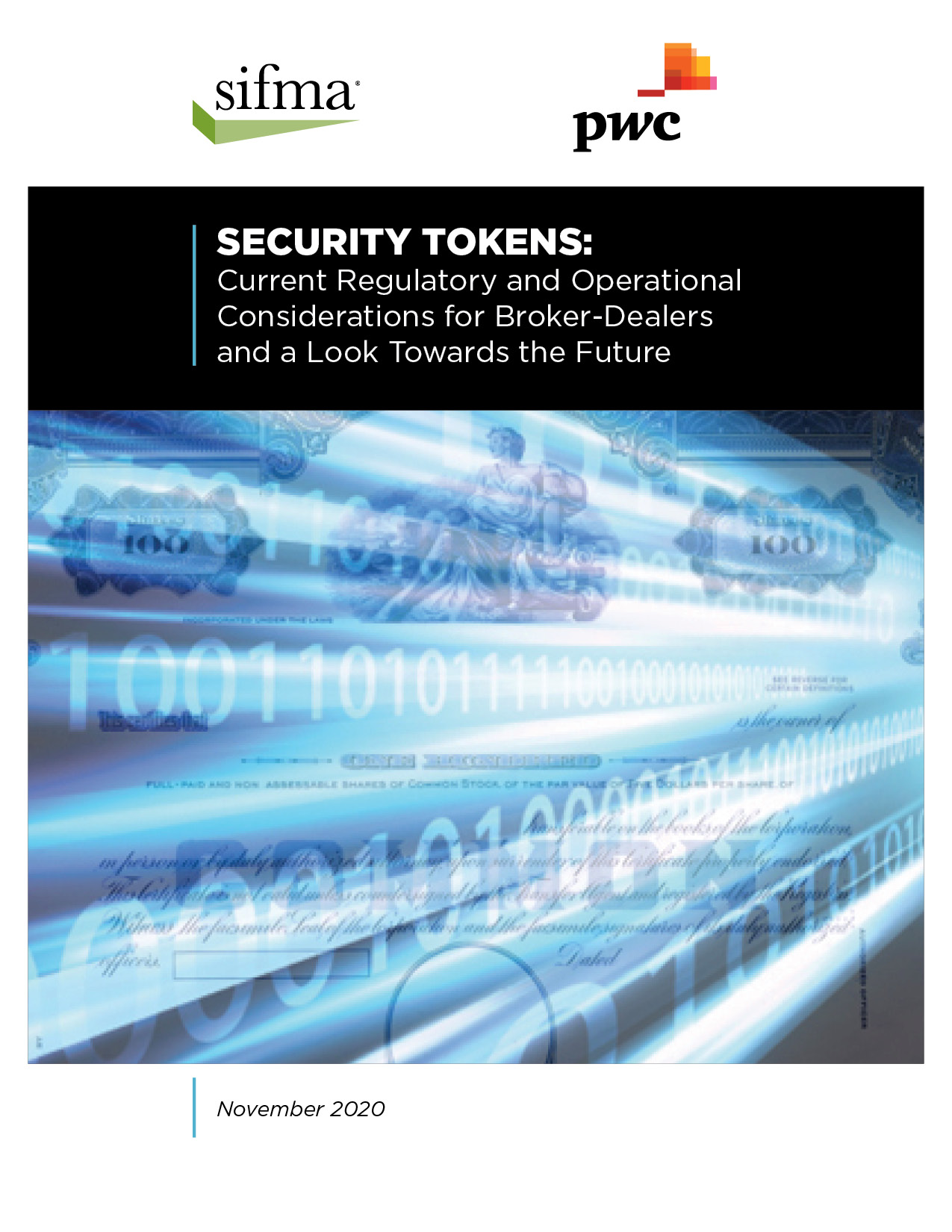Security Tokens
Current Regulatory and Operational Considerations for Broker-Dealers and a Look Towards the Future
SIFMA developed this whitepaper together with PwC to outline a foundational understanding of how distributed ledger technology (DLT) and digital assets such as security tokens interplay with the current securities market. It also describes the key operational challenges faced by U.S. broker-dealers hoping to adopt this technology and recommends where regulatory clarity would be helpful in addressing these challenges.
The whitepaper, which focuses only on security tokens, covers each phase of a securities life cycle applicable to a security token including defining a security; issuance, trading, clearing and settlement and custody and consumer protection, and impact on retail investors. The paper explores how the further development of these assets can potentially offer a range of benefits to market participants, which may include cost savings in settlements, increased speed of issuance and settlements, increased transparency, achieving data immutability, streamlined record keeping and data reconciliation, and the ability to program assets (i.e. smart contracts). The whitepaper also noted the importance of maintaining the industry’s robust controls and protections as the infrastructure for these assets is developed.
While SIFMA highlights a number of issues across the lifecycle of a security to consider, the whitepaper focuses on three key questions which need to be addressed by stakeholders and regulators for the market to fully develop:
- Is DLT sufficiently robust to act as the registrar or to satisfy industry participants’ books and records requirements;
- Can a broker-dealer meet possession or control requirements (i.e., SEC Rule 15c3-3, “Customer Protection – Reserves and Custody of Securities”) when using DLT based systems; and
- Whether certain parties involved in the clearing and settlement of a transaction require registration as a clearing agency.
Excerpt
Executive Summary
The United States has the deepest and most liquid capital markets in the world, facilitating growth and innovation across all industry sectors. Throughout the years, U.S. capital markets have continued to innovate as technology has allowed for profound evolutions in market infrastructure, changing at times the very nature of American financial markets. Over the last few years, Distributed Ledger Technology (“DLT”) has rapidly gained interest in the securities industry, including SIFMA and many of its members.
As observers have noted, interest in DLT involves the potential benefit it could bring to the capital market ecosystem and infrastructure. Some benefits that have been described include capital savings through reduced or instantaneous settlement, streamlining of recordkeeping and data reconciliation, and the programmability of a securities asset itself; among many others. DLT has been explored by regulated financial institutions and market infrastructure providers through various pilots and production platforms, researched by regulators, and leveraged by certain market participants exploring innovative ideas around improving transfer of value and development of new types of finance. Financial market participants in particular have started to take an increasing interest in the use of DLT to issue securities and effect securities transactions. This is evidenced by global regulatory authorities issuing licenses to entities servicing digital securities1; a few approved Regulation A+ security token offerings (“STOs”); a public company seeking to issue a completely digital dividend that evolved into a courtesy copy being available through a digital format; a proposed trading facility for the listing and trading of a new type of tokenized equity security; and even the first ever effectiveness of a public offering of securities native on DLT in the U.S.
